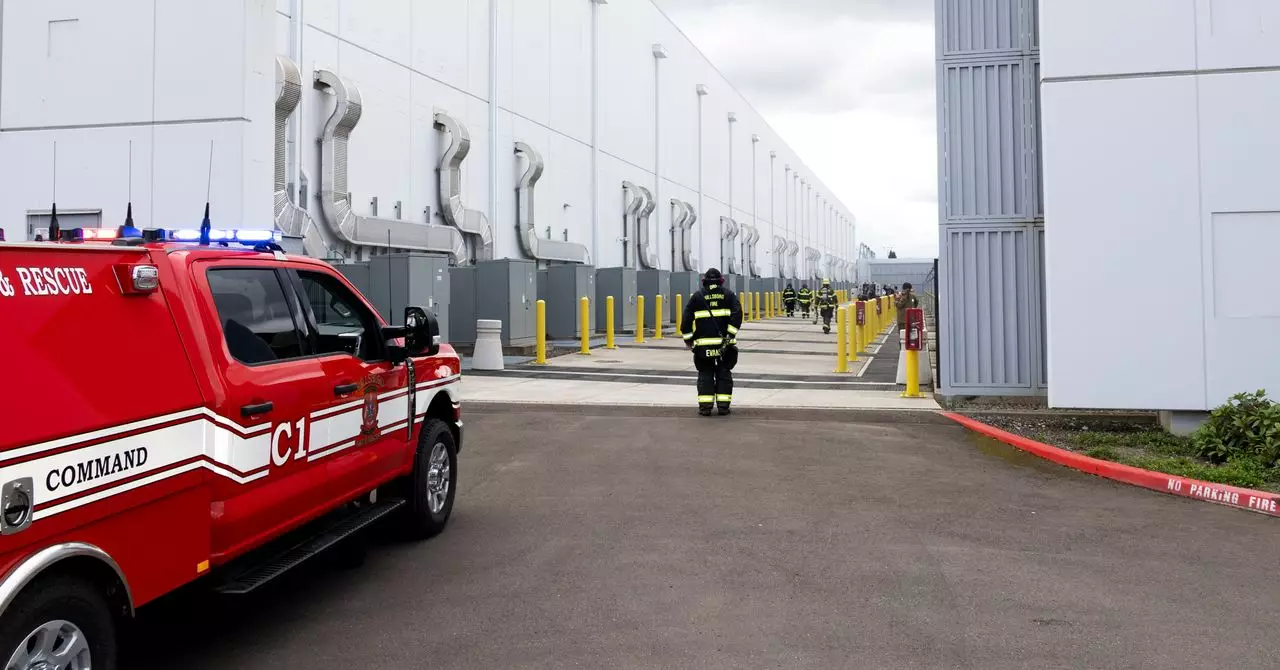In an era driven by relentless technological advancement, data centers form the backbone of our digital lives. Yet, beneath their impressive infrastructure lies an often-overlooked vulnerability: the potential for catastrophic fires. The recent blaze at a major data facility operated by Digital Realty, hosting servers for Elon Musk’s X, exposes the fragile interplay of electrical systems and high-powered equipment that can spell disaster. Far from being rare anomalies, such incidents reveal systemic flaws that demand urgent industry introspection. As the demand for expansive AI capabilities surges, so does the risk embedded within these technological fortresses. Without proactive measures, these fire hazards threaten not just business continuity but also data security and public safety.
Electrical Systems Under Strain: The Root of Modern Data Center Fires
The recent incident indicates that electrical or mechanical failures within power infrastructure are prime culprits in data center fires. The specific fire originated within a Schneider Electric UPS system—a crucial component designed to provide uninterruptible power supply. These units, similar in principle to large batteries found in electric vehicles, are indispensable for maintaining stability during power fluctuations. Yet, their complexity and load demands make them susceptible to malfunction. Electrical failures, either from component degradation or unforeseen overloads, can ignite fires that quickly escalate, especially if cooling and monitoring systems are inadequate. This incident underscores an uncomfortable truth: as data centers grow larger and more powerful, their equipment must evolve to address these heightened risks.
The Limitations of Current Protective Measures
Despite fire safety protocols, the recent event demonstrates that existing protective measures can fall short. Firefighters responded swiftly — within 11 minutes — yet the damage was significant, with the destruction of one cabinet and damage to neighboring units. The fire’s origin within the UPS suggests that even with modern fire suppression systems in place, vulnerabilities remain. Notably, initial suspicions that lithium-ion batteries caused the fire were dispelled; instead, electrical failure was identified as the likely culprit. The possibility that complex electrical systems may fail silently, only to ignite unexpectedly, calls for a radical reassessment of safety standards. Facilities need more than just fire extinguishers—they require intelligent monitoring, redundant safety layers, and innovative cooling strategies tailored for high-density, AI-centric operations.
Industry Response: Adequacy or Complacency?
In response to fires like this, operators often emphasize quick fixes and vague assurances of “improvements,” but such gestures often mask deeper issues. Digital Realty’s statements suggest that they acknowledge electrical causes, yet remain reticent about specifics. This opacity delays industry-wide learning and leaves customers in the dark about risk levels. The broader industry must question whether current practices—ranging from maintenance routines to infrastructure design—are sufficient for the escalating demands of AI and big data processing. A shift toward more rigorous safety audits, enhanced cooling solutions, and smarter fire detection technologies is not just desirable, but essential. Relying solely on traditional fire suppression systems in increasingly complex environments is a recipe for disaster.
Looking Forward: A Call for Innovation and Accountability
The intersection of surging AI development and aging electrical infrastructure demands innovation. Industry stakeholders must prioritize the development of more resilient power systems with built-in redundancies and real-time monitoring that can predict failures before they happen. Also, manufacturers of critical components like UPS units need to implement tougher safety standards, perhaps even exploring fire-resistant materials or more advanced fail-safes. Meanwhile, regulators must impose stricter guidelines and enforce accountability after incidents—creating a culture where safety is prioritized over cost-cutting. Ultimately, the ongoing threat of data center fires is a stark reminder that technological progress must always be matched with an unwavering commitment to safety, transparency, and resilience. Only then can we ensure that our digital future does not come at the cost of safety and stability.

